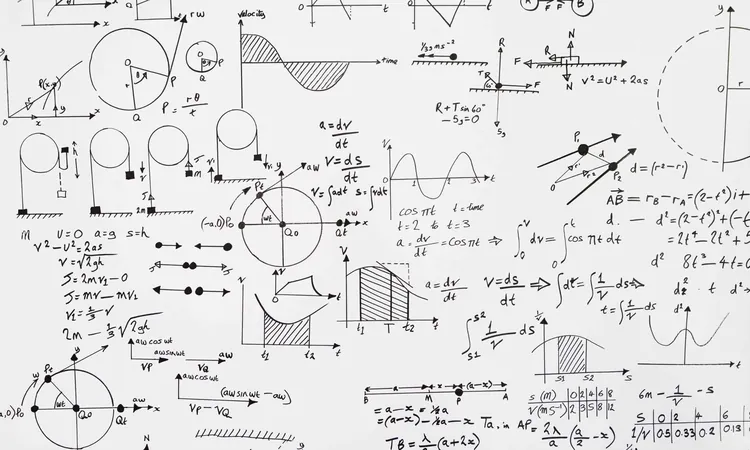
Mathematical Breakthrough: Solving a 125-Year-Old Physics Riddle
2025-05-26
Author: Daniel
A groundbreaking development in mathematics and physics might have just dawned as researchers unveil a potential solution to Hilbert’s sixth problem, a conundrum that has puzzled scholars for over a century.
Unifying the Laws of Physics and Mathematics
Back in 1900, renowned mathematician David Hilbert proposed 23 monumental challenges, one of which questioned whether mathematics could encapsulate the fundamental laws of physics. Fast-forward to today, and a team led by Yu Deng at the University of Chicago, alongside Zaher Hani and Xiao Ma from the University of Michigan, reports that they might have cracked the code.
Connecting the Micro and Macro Worlds
Traditional theories have delved into the movements of tiny particles, yet linking these micro-level dynamics to macroscopic phenomena has been a significant hurdle. The team's innovative approach transits smoothly from the realm of Isaac Newton, focusing on individual particles, to broad equations governing fluid dynamics.
Addressing the Complexities of Collisions
One major challenge in this relationship is the chaotic nature of particle collisions. Past efforts like those by Oscar Lanford showed limited success for short durations. However, this new research extends those ideas, demonstrating that Boltzmann’s equation holds valid for significantly longer durations than previously understood.
The Time Conundrum in Physics
Time itself poses a perplexing question in physics. Under Newton's laws, time is symmetrical, functioning the same forwards and backwards. Yet, thermodynamics clearly favors a one-way direction. Tackling this disparity, the researchers developed a method that uses Feynman diagrams to track particle interactions over time without contradictions, shedding light on how time's unidirectional nature might evolve from foundational principles.
The Significance of Fluid Physics
On a grander scale, mathematicians employ the Navier-Stokes equations to model fluid behavior, yet firmly connecting these back to basic laws has remained elusive. The latest findings propose a cohesive view, bridging individual particle collisions, kinetic theory, and classical fluid models, potentially revolutionizing how we predict weather patterns or design advanced engines.
Real-World Applications of the Research
The implications of this work extend far beyond theoretical math. Enhanced equations could improve models of air and oceanic flows, particularly in complex scenarios like hurricanes. By creating a cohesive framework linking individual particle motion to large-scale fluid dynamics, this research could refine climate models and bolster the accuracy of long-term predictions.
What’s Next for This Revolutionary Work?
Currently, the findings are in preprint, awaiting formal peer review. As the scientific community delves deeper, experts are keen to explore the broader applications in plasma science and geophysical fluid dynamics. The next phase for the researchers will be verifying their methods under diverse conditions, with hopes that this work might catalyze further inquiries into complex fluids and quantum systems.
Shifting the Paradigm of Science
This innovative research seeks to bridge the gap between mathematics and physics, addressing long-standing mysteries surrounding time, motion, and irreversibility. As the theories transition from preliminary findings to rigorous scrutiny, the scientific community stands poised to witness potential advancements in computational models—an exciting leap from the atomic scale to fluid equations.



 Brasil (PT)
Brasil (PT)
 Canada (EN)
Canada (EN)
 Chile (ES)
Chile (ES)
 Česko (CS)
Česko (CS)
 대한민국 (KO)
대한민국 (KO)
 España (ES)
España (ES)
 France (FR)
France (FR)
 Hong Kong (EN)
Hong Kong (EN)
 Italia (IT)
Italia (IT)
 日本 (JA)
日本 (JA)
 Magyarország (HU)
Magyarország (HU)
 Norge (NO)
Norge (NO)
 Polska (PL)
Polska (PL)
 Schweiz (DE)
Schweiz (DE)
 Singapore (EN)
Singapore (EN)
 Sverige (SV)
Sverige (SV)
 Suomi (FI)
Suomi (FI)
 Türkiye (TR)
Türkiye (TR)
 الإمارات العربية المتحدة (AR)
الإمارات العربية المتحدة (AR)